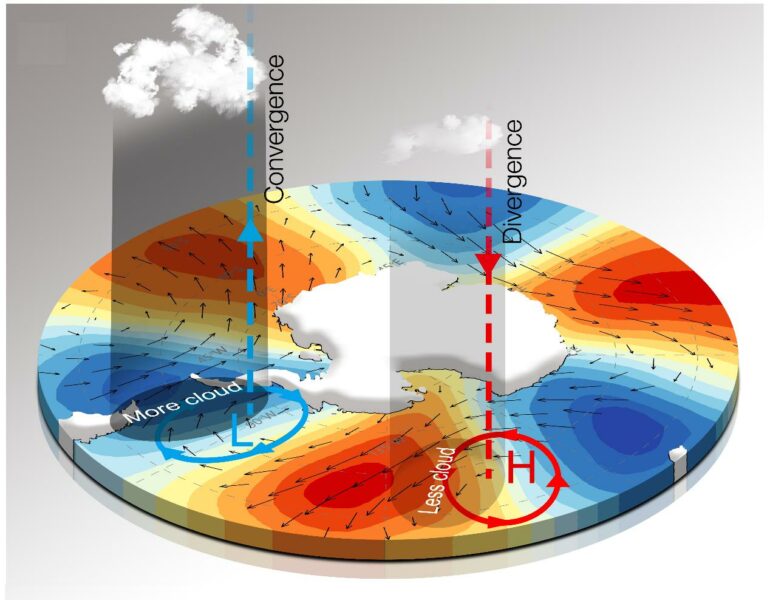Clouds play a critical role in the global climate system. The unique Antarctic environment, with extremely low temperature, low moisture, and low aerosol concentration, makes cloud formation different from that in other regions, including the Arctic.
However, current state-of-the-art climate models have tremendous inter-model discrepancies in cloud simulations. The lack of knowledge of cloud processes in the extreme polar environment introduces errors in simulations of atmosphere and sea ice interaction in climate models.
Recently, a research team led by Dr. Bi Haibo and Dr. Wang Yunhe from the Institute of Oceanology of the Chinese Academy of Sciences (IOCAS) has found a coupled mode of cloud, atmospheric circulation, and sea ice controlled by wave-3 pattern in Antarctic winter.
The study was published in Environmental Research Letters on Feb. 7.
In the coupled mode, both horizontal and vertical moisture transports contribute to the cloud’s wave-3 distribution at mid-level of the troposphere, indicating that the moisture sources of cloud come from both local and remote regions.
“The sea ice variability in winter is driven by both low-level atmospheric circulation and cloud radiative forcing related to the wave-3 pattern,” said Dr. BI. The atmospheric circulation controls mid-level cloud distribution. In turn, cloud radiative forcing further strengthens the sea ice anomalies generated by the low-level atmospheric circulation.
However, the leading low-level cloud mode dominated by orography effects and atmospheric circulation anomalies does not match the wave-3 pattern, of which the radiative forcing on sea ice is suppressed by the direct dynamic and thermodynamic forcing of the circulation.
“These discoveries provide a better understanding of Antarctica’s interactive processes, and also offer physical evidence for climate model validations,” said Dr. Wang.
More information:
Yunhe Wang et al, A coupled mode of cloud, atmospheric circulation, and sea ice controlled by wave-3 pattern in Antarctic winter, Environmental Research Letters (2022). DOI: 10.1088/1748-9326/ac5272
Provided by
Chinese Academy of Sciences
Citation:
Scientists discover coupled mode of cloud, atmospheric circulation, and sea ice in Antarctic winter (2022, February 16)
